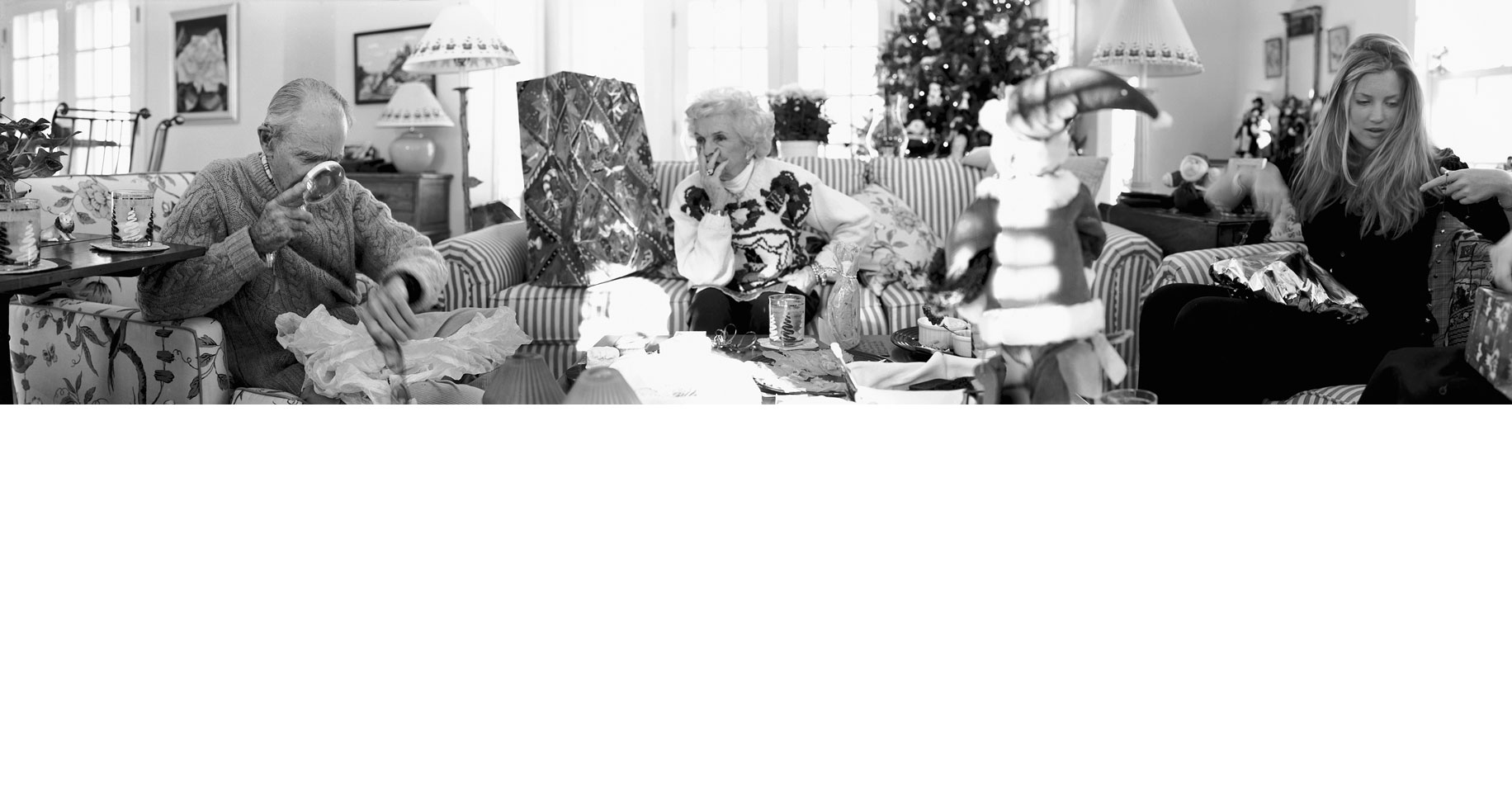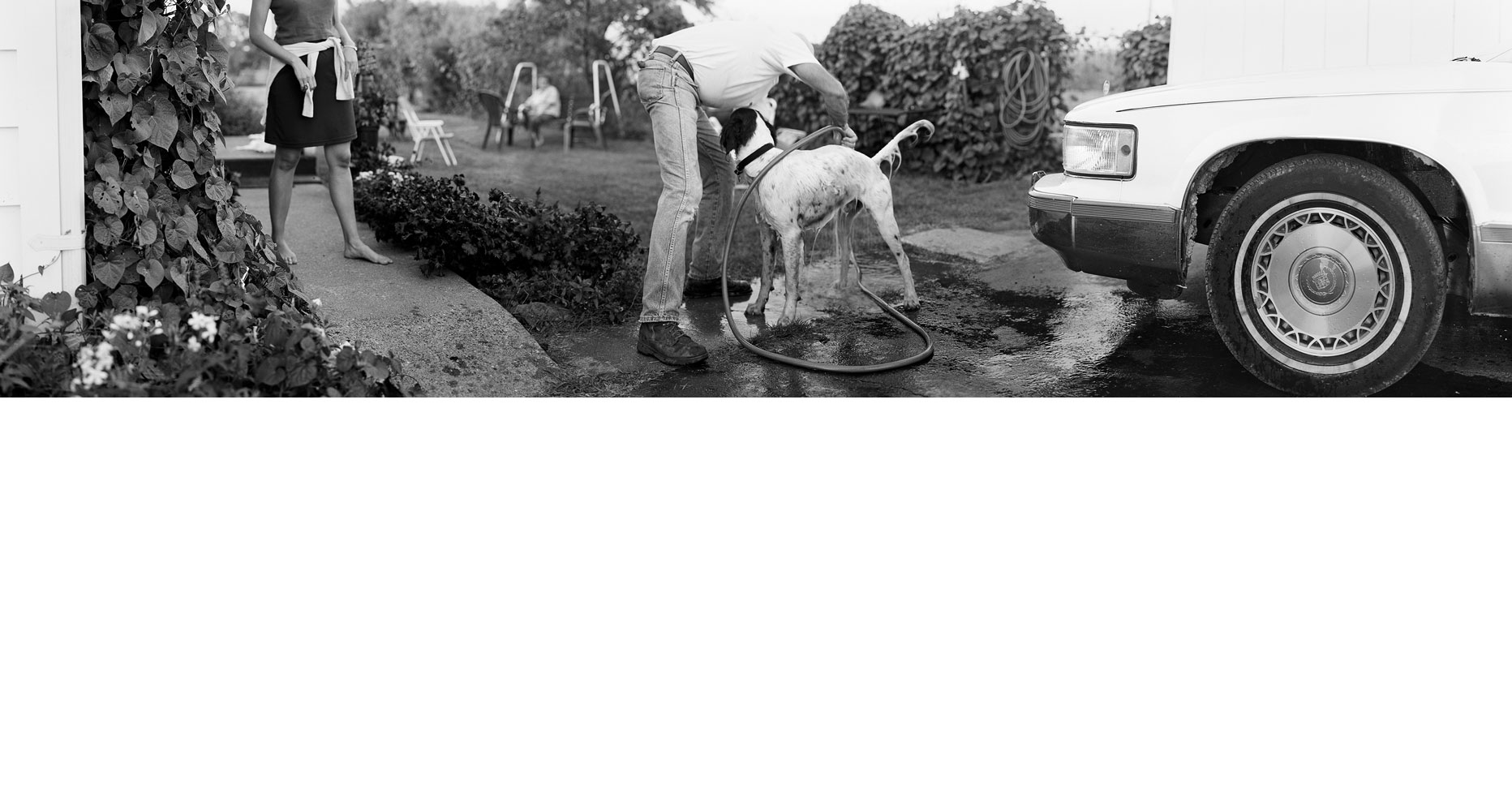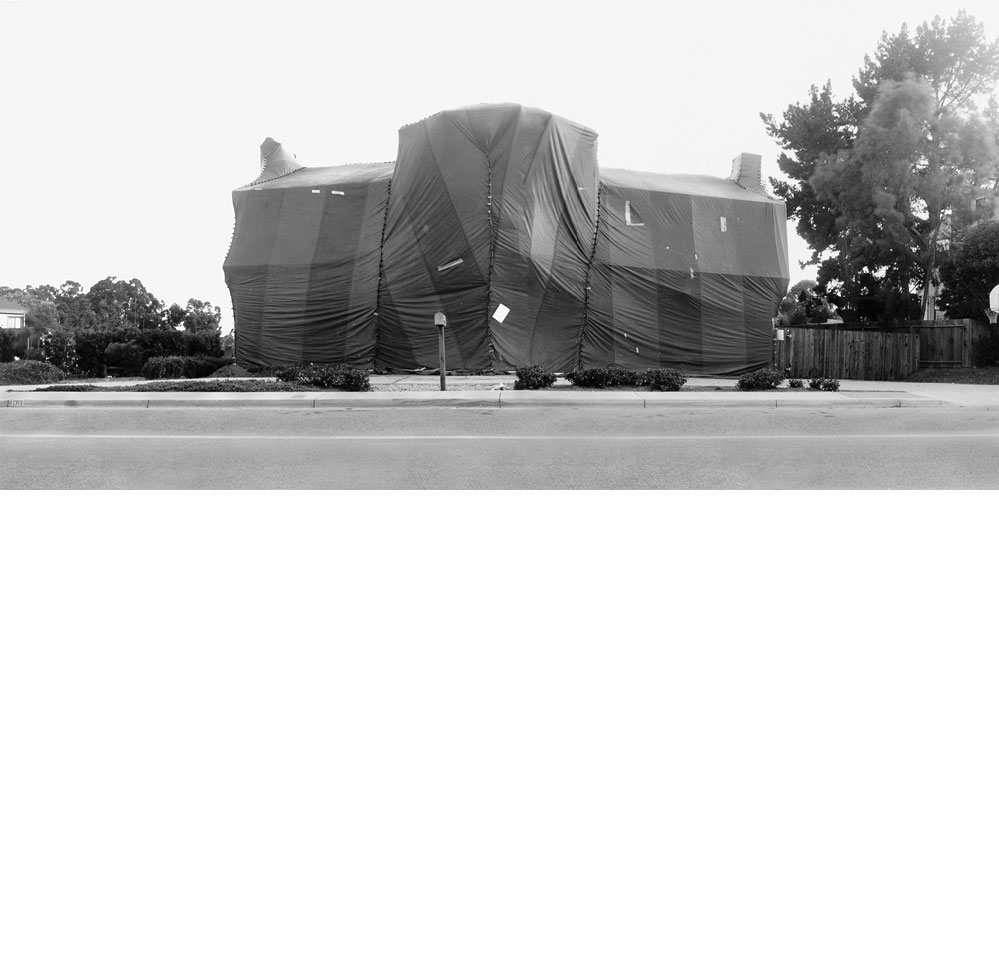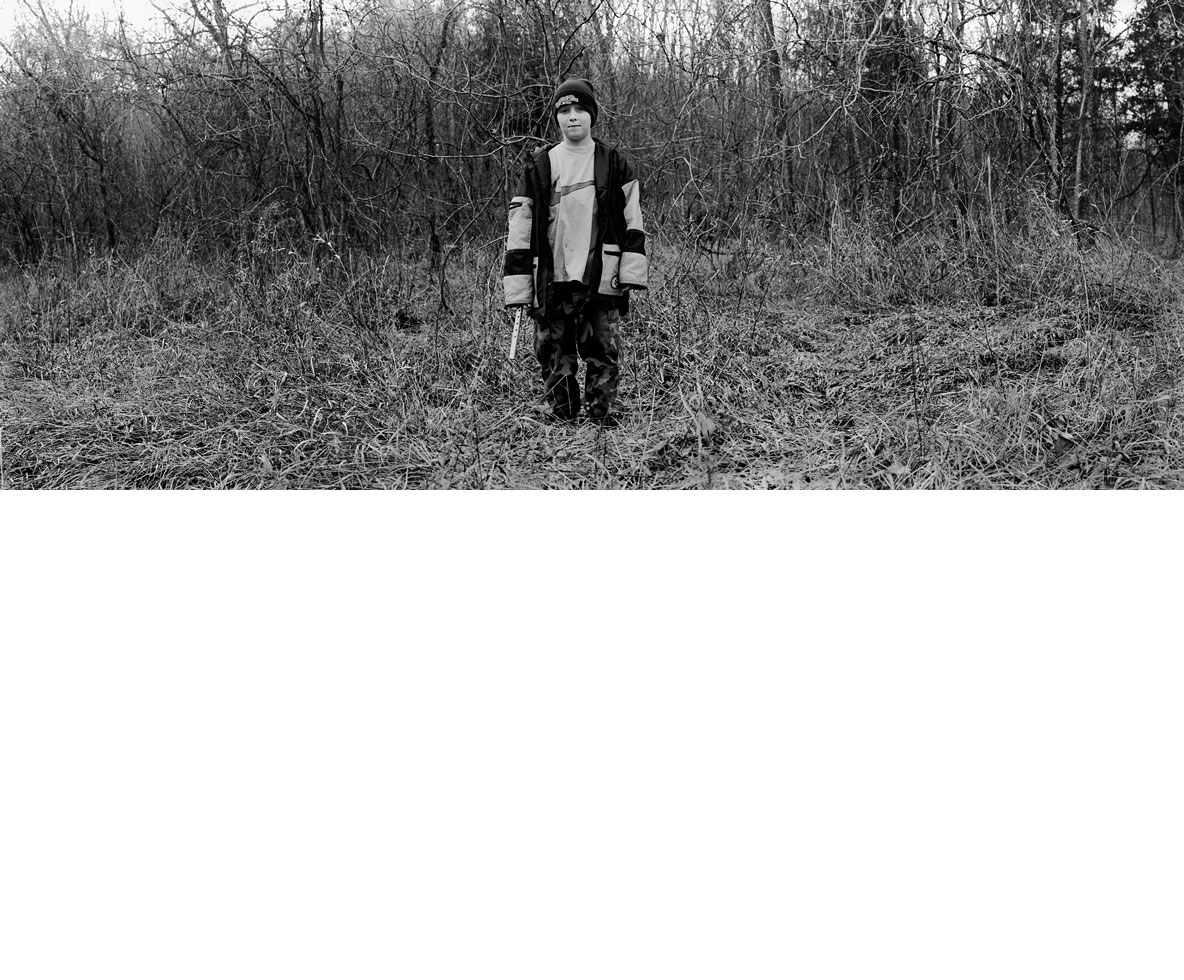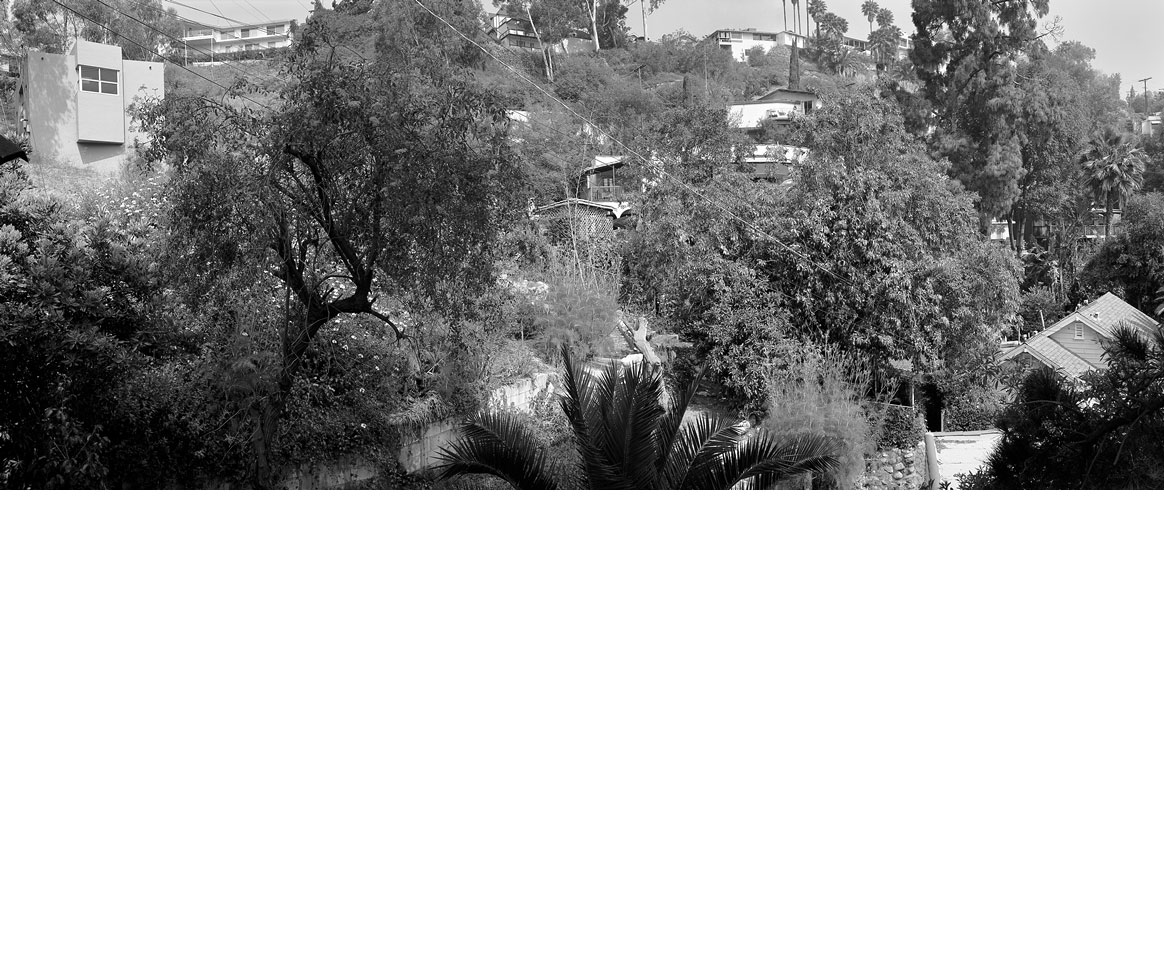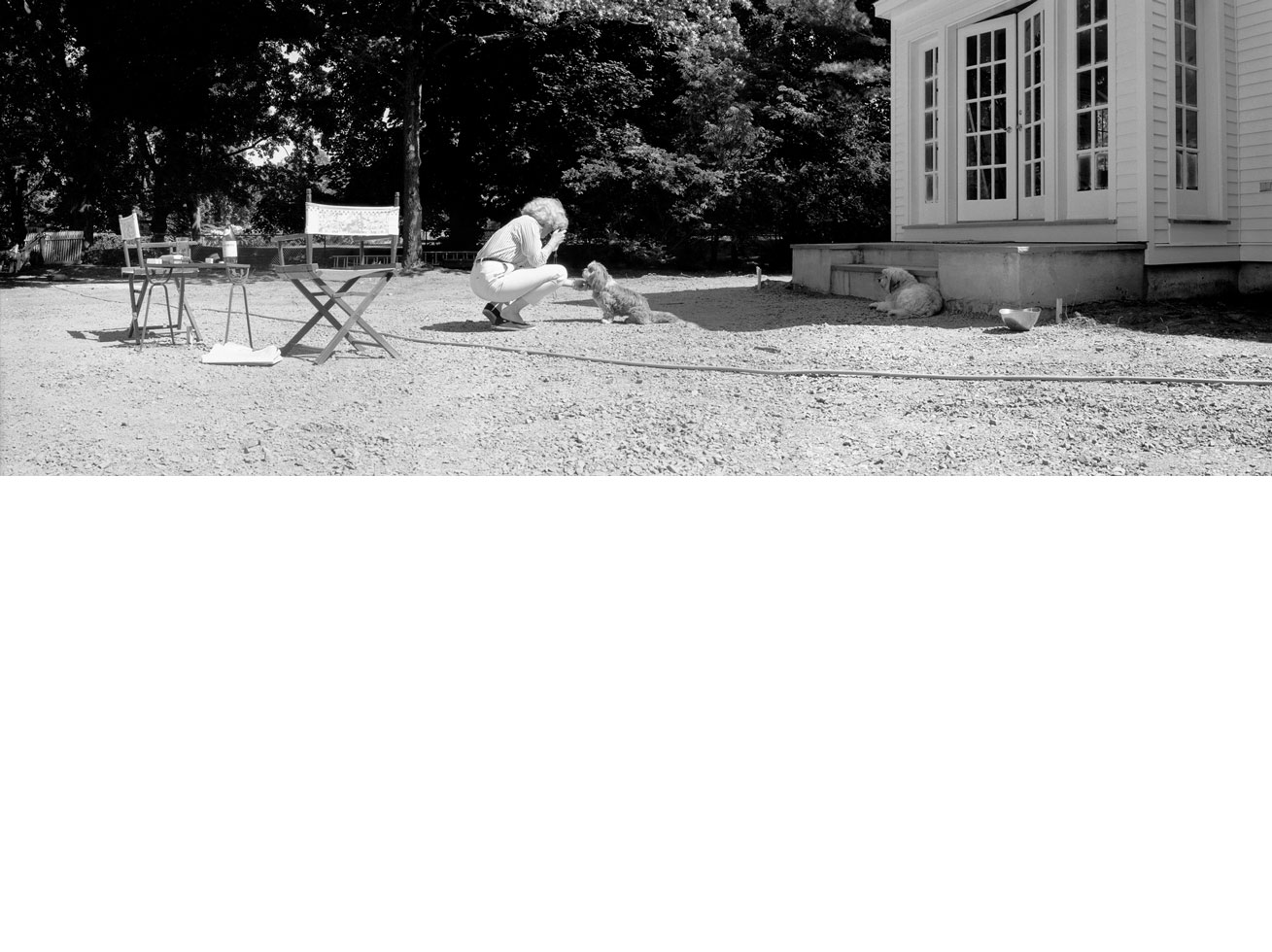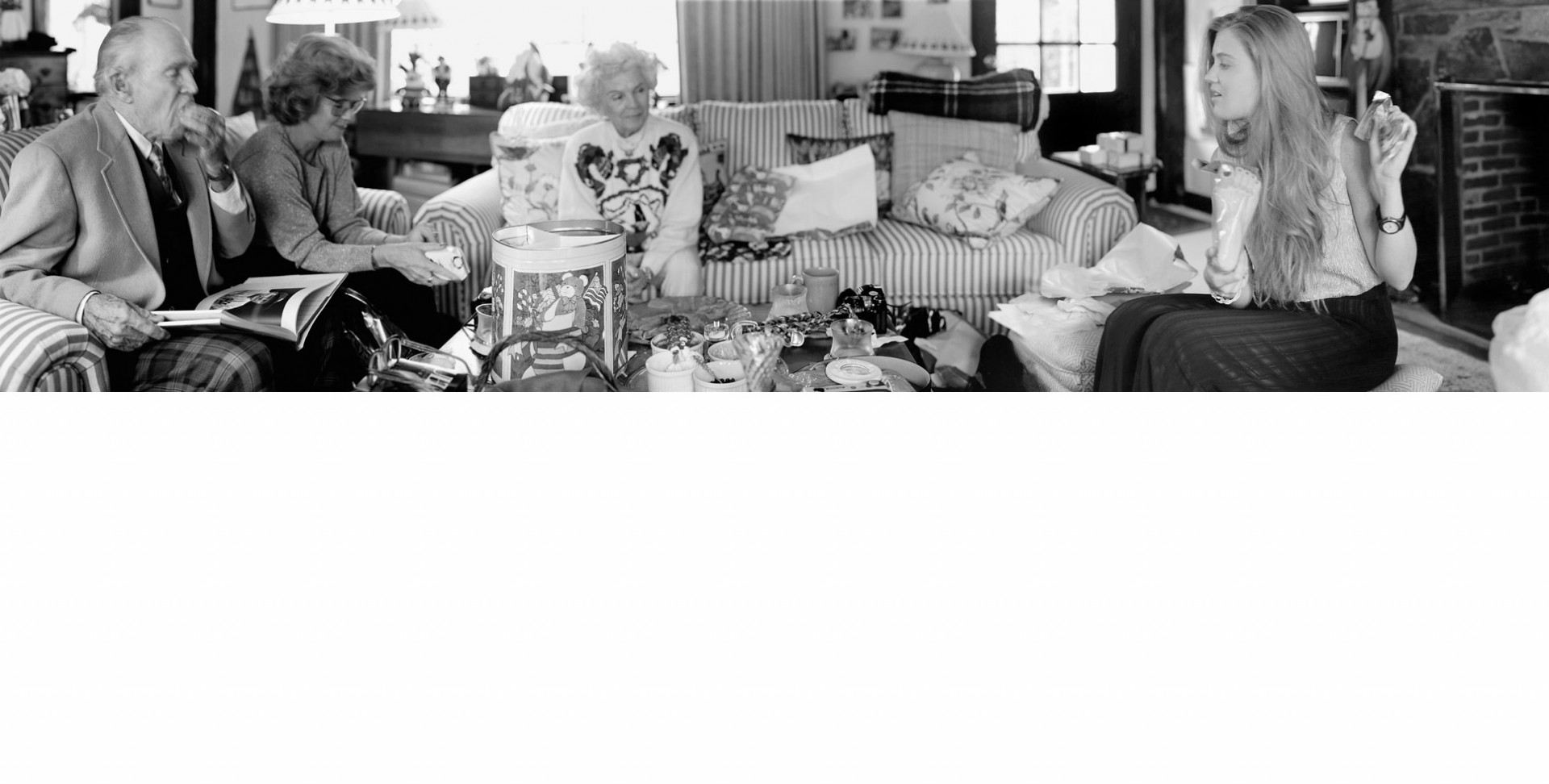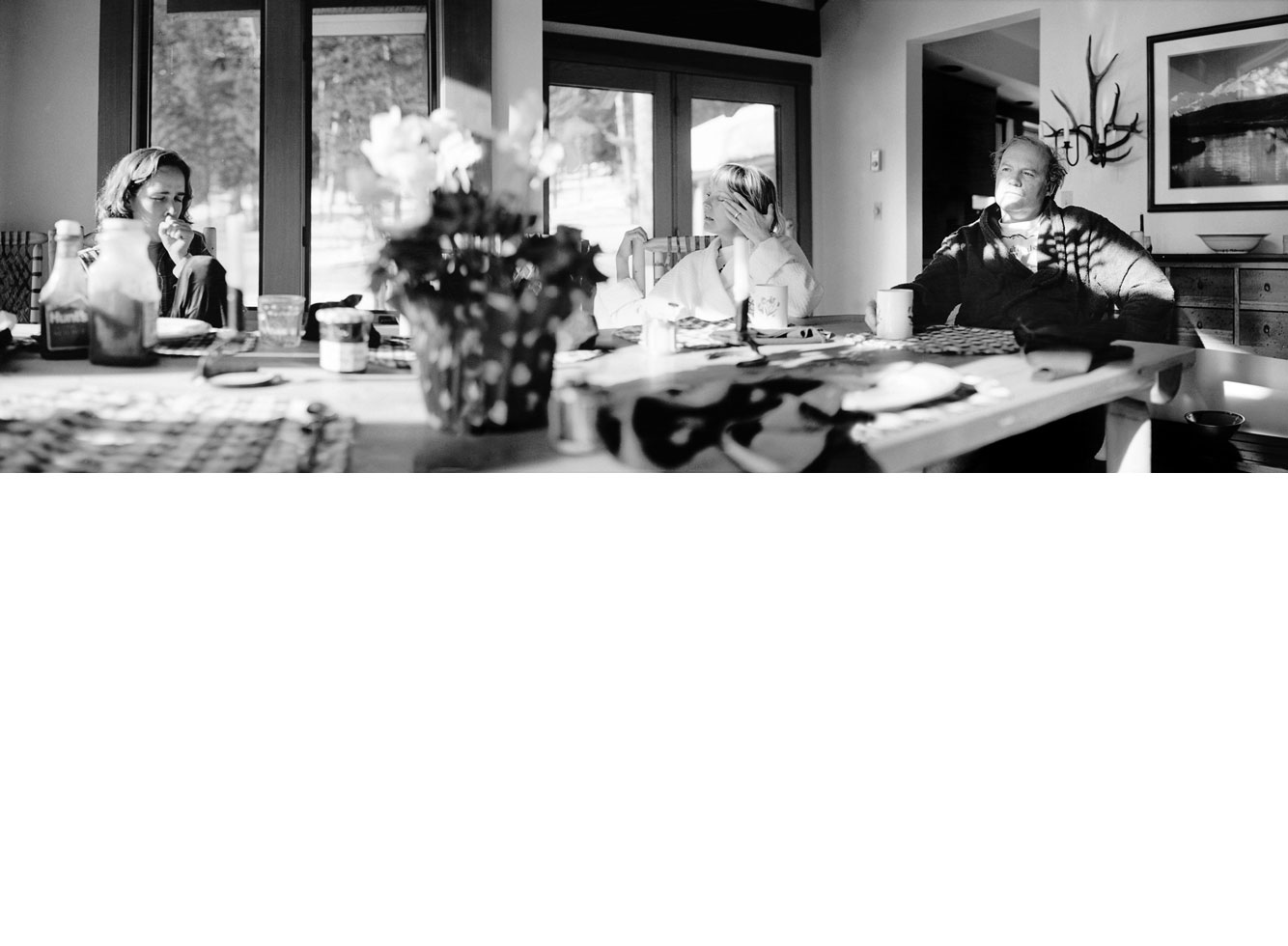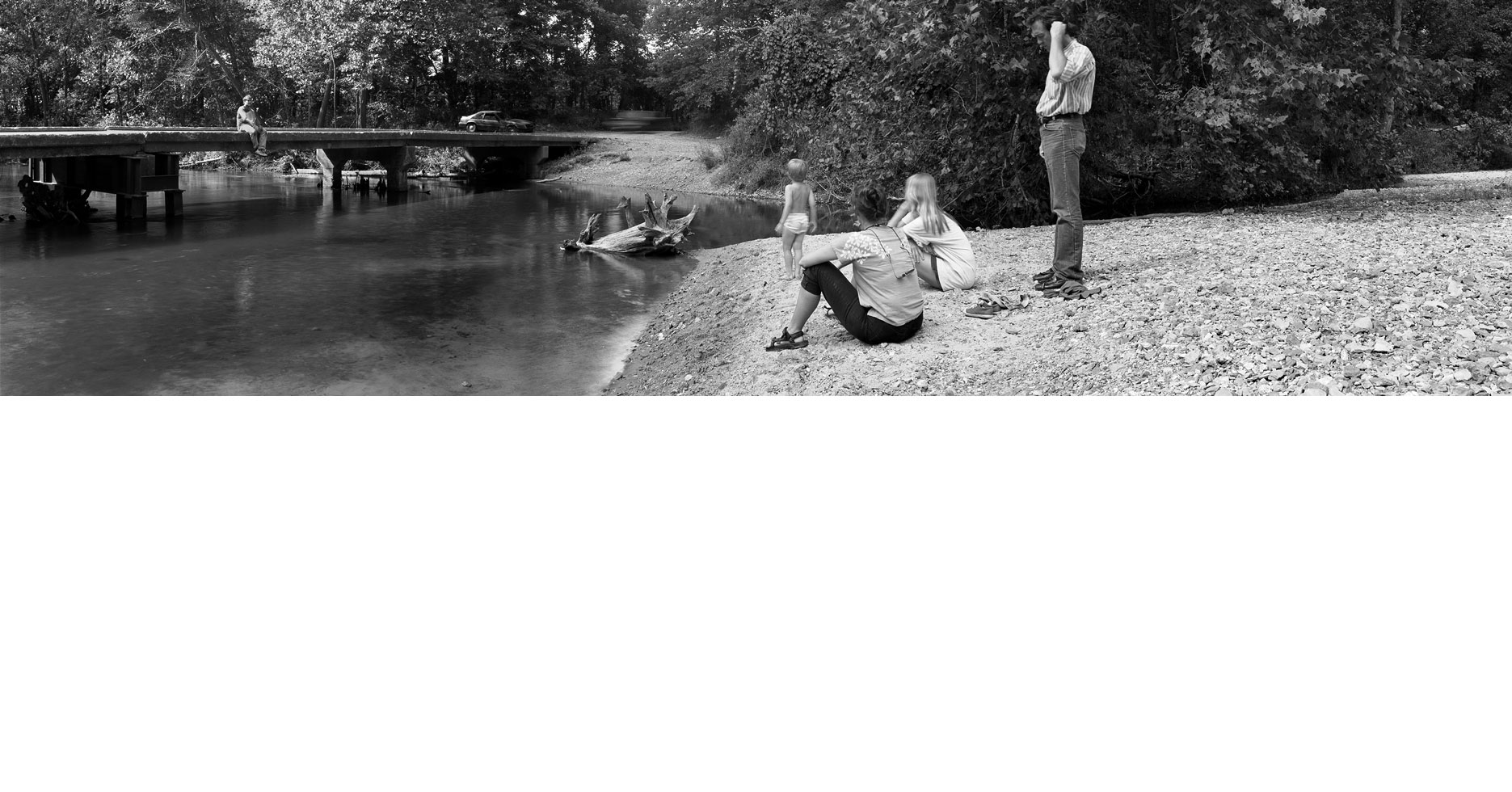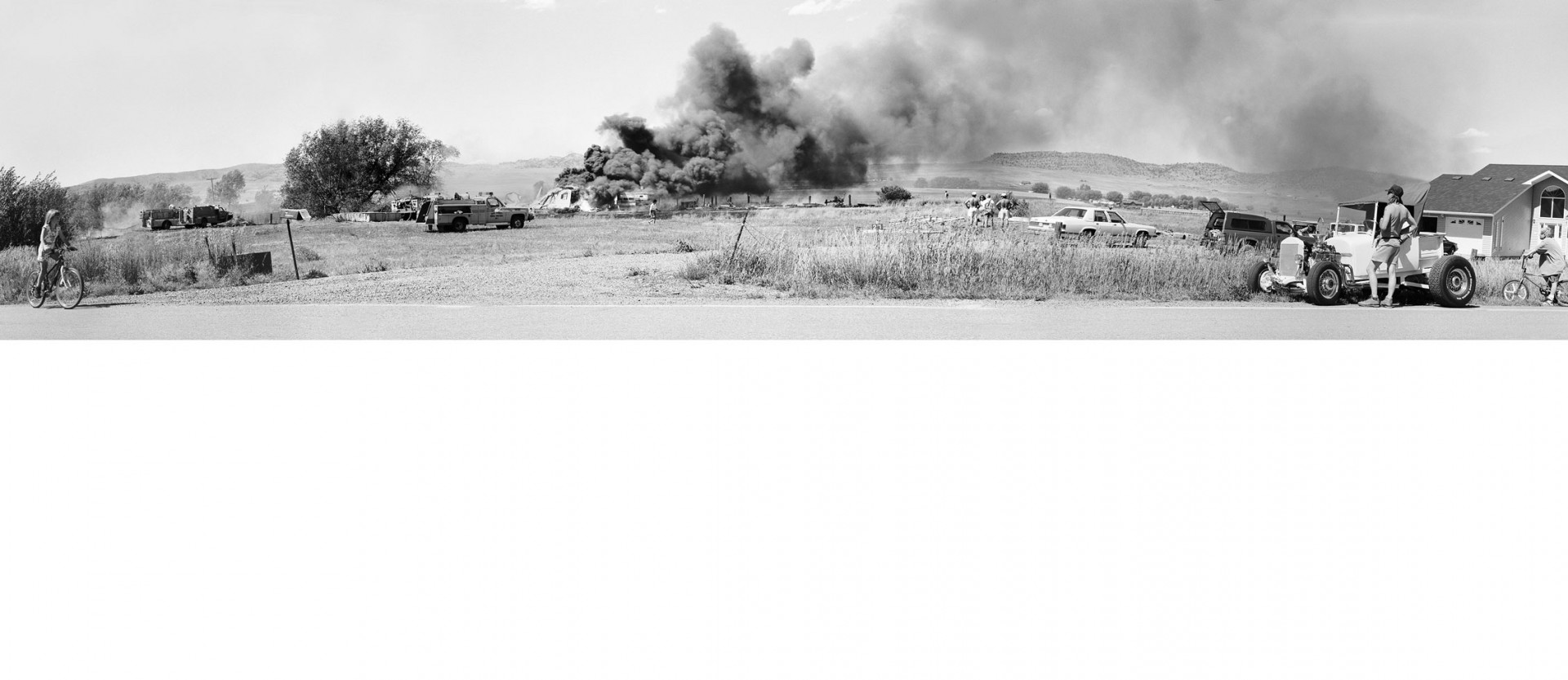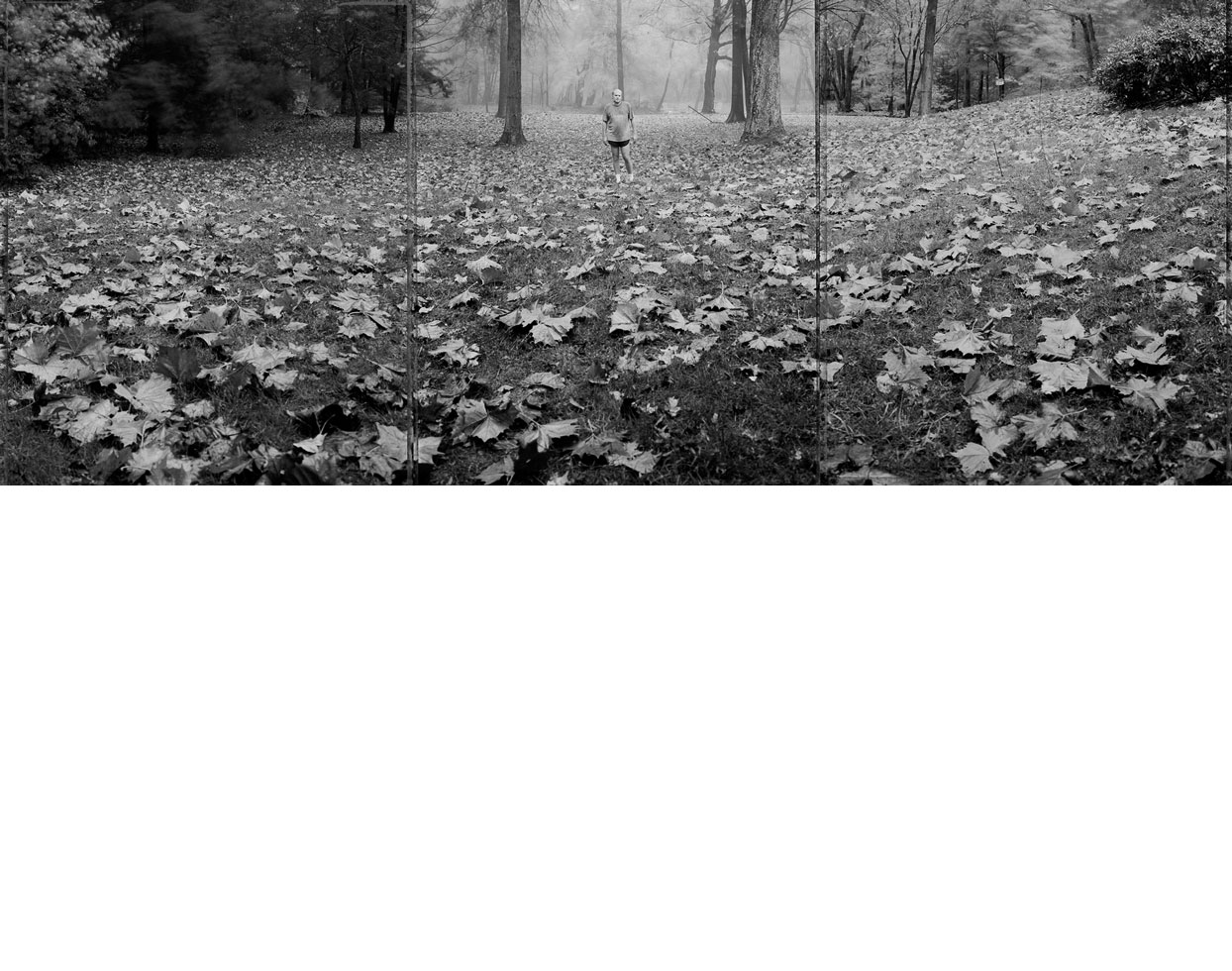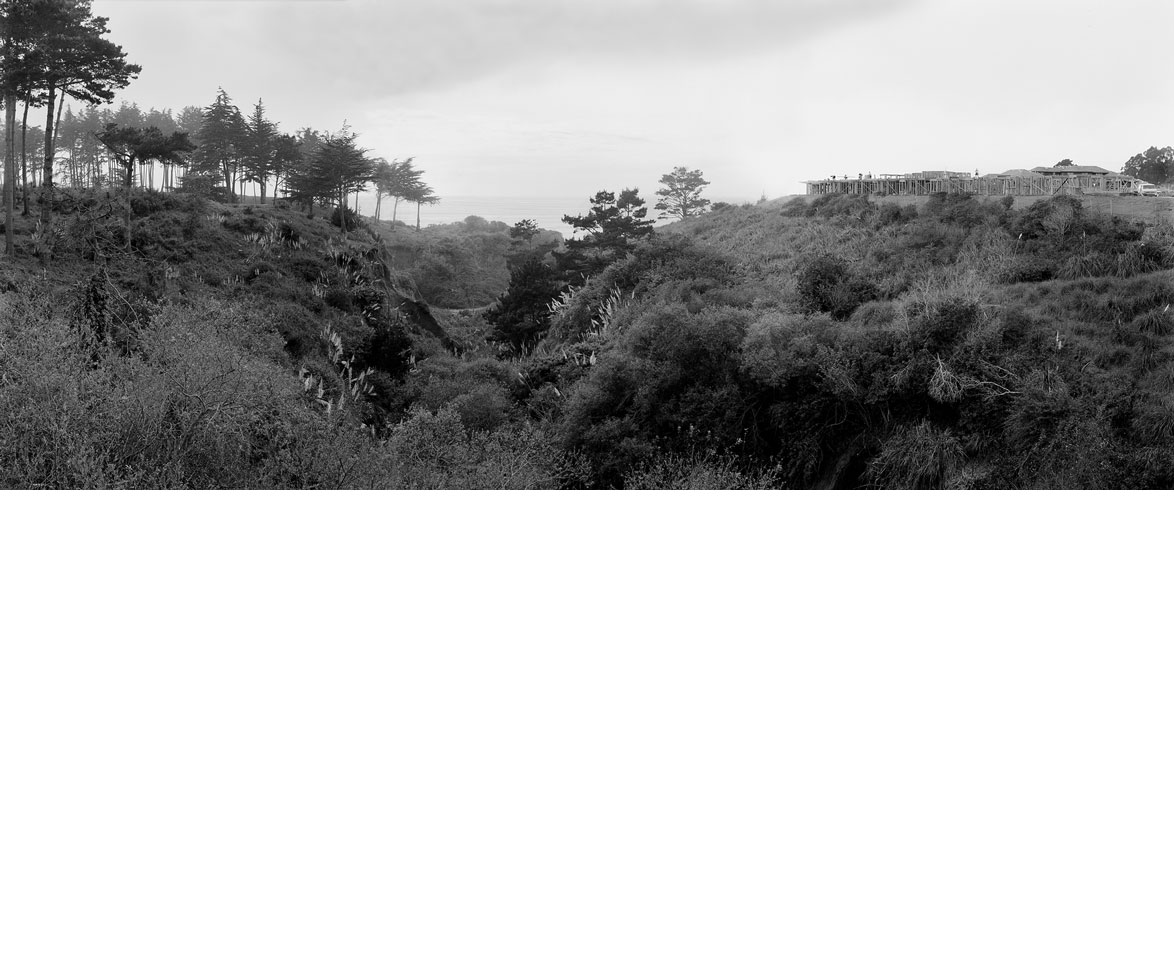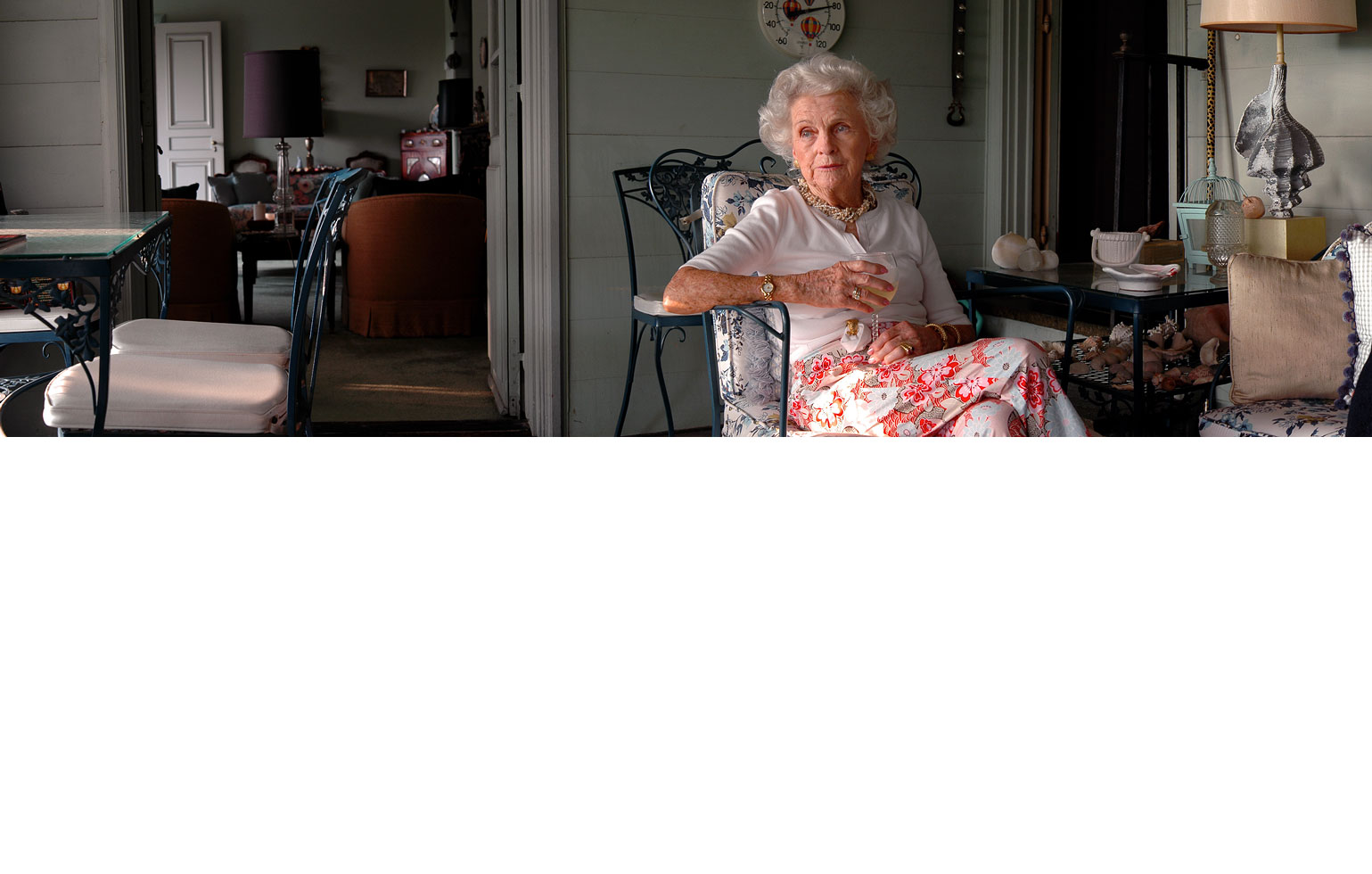In 1993 I encountered a house undergoing tent fumigation in Santa Cruz, California. My one camera had a fixed lens that couldn’t fit the scene in the full frame, so out of necessity I made a diptych panorama, splitting the house down the middle.
Soon after, while visiting rural Ten Mile, Missouri, I encountered a similar problem. In a room were four generations of a family, each person engaged in distinct actions within the space – a woman brushing her teeth, a girl sipping coca-cola from a crazy straw, a man cleaning the toes of his wife’s aging grandmother. Again, my camera was ill-equipped to take in everything at once, so I made a triptych, panning across to expose several negatives in each location.
When I processed the film, I realized I could choose which negatives worked together to form a compelling narrative. I came to think of a roll of film as a story wrapped around itself — a story revealed by a process of subjective selection. I could create calculated pictures, and the idea of post-visualizing the image was exciting for me.
With later digital tools, I began making the triptych panoramas into seamless images. The expressions and gestures of the subjects, while not existing simultaneously in real time, worked to form narratives that spoke to the complex dynamics of family and domesticity. I wanted to explore the medium’s potential beyond the decisive moment aesthetic, and come to some resolution on how disparate elements could work to form one cohesive picture.
(all images from 1993-2003)


